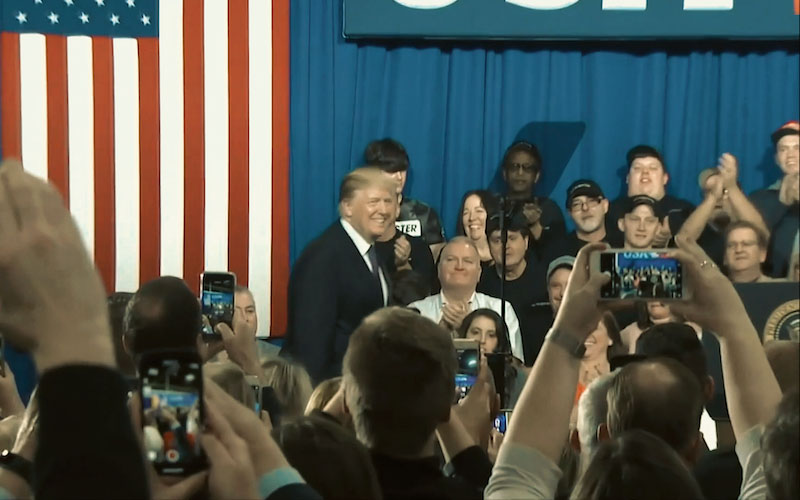Trump's tariff deadline postponed: Hopes of global trading partners and worries about corporate survival
2025-07-09 15:31:11

Trump's new tariff policy: from tough stance to strategic compromise
Disappointment and tough continuation
Trump has shown obvious dissatisfaction with the lengthy and complex trade negotiations. He once ambitiously proposed the goal of "reaching 90 agreements in 90 days", but the actual trade negotiations are far more complicated than expected, involving red lines of many countries and compromises with US demands. According to reports, Trump sent formal letters to 14 countries, clearly warning that "reciprocal" tariffs of 25% to 40% will be imposed on some countries, and postponed the tariff deadline originally scheduled for Wednesday (July 9) to August 1, declaring that this will be the "final deadline and there will be no further extensions." This move was interpreted by trade experts as a strategic adjustment by Trump after the setback in the negotiations, aimed at forcing trading partners to make more concessions by extending the deadline and increasing tariff threats.
The shock effect of new tariffs
In addition to postponing the tariff deadline, Trump also announced on Tuesday that he would impose tariffs of up to 50% on imported copper, and said that tariffs on semiconductors and pharmaceuticals would also be introduced in the future. He made it clear that he prefers to achieve trade goals through simple and direct tariffs rather than time-consuming and laborious trade negotiations. This tough stance is not only a pressure on trading partners, but also reflects the urgency and flexibility of the Trump administration in trade policy. However, this rapidly changing policy has also brought huge uncertainty to the global market.
Trading partners’ responses: a mixture of hope and pressure
Japan's careful balance
As an important trading partner of the United States, Japan was once considered the country most likely to reach an agreement first. However, as Japan will hold a Senate election on July 20, Prime Minister Shigeru Ishiba faces domestic political pressure, and any excessive concessions may jeopardize the position of the ruling Liberal Democratic Party. Analysts point out that Japan needs to find a delicate balance between safeguarding national interests and responding to Trump's tariff threats. William Reinsch, a former U.S. Commerce Department official and current senior trade adviser at the Center for Strategic and International Studies, pointed out incisively: "These countries did not give in, and Trump did not get what he wanted, so he threw out new threats."
South Korea's tough response
Newly elected South Korean President Lee Jae-myung has pledged to speed up the pace of negotiations and strive for a "mutually beneficial" outcome. However, analysts warn that Lee is by no means a "soft persimmon" in Trump's eyes. South Korea will strive not to lag behind Japan in trade negotiations and maintain its competitiveness in the regional economy. This tough attitude may complicate US-ROK negotiations and add variables to reaching an agreement.
The different fates of the EU and small countries
Compared with the 14 countries that received warning letters, the EU has not been included in the highest tariff threat list for the time being, and its 20% tariff rate (based on twice the 10% base rate) remains unchanged. This gives the EU some room for maneuver in the negotiations. However, the situation of small exporting countries such as South Africa, Thailand and Malaysia is more difficult. Due to limited negotiation resources, the Trump administration may focus more on large trading partners such as the EU, resulting in unclear negotiation prospects for these small countries and greater uncertainty for exporters.
The survival crisis of enterprises: Struggling under the shadow of tariffs
The Dilemma of Supply Chain Adjustment
The rapid changes in Trump's tariff policy caught global companies off guard. Both large multinational companies and small and medium-sized enterprises are trying to adjust their supply chains and cost structures to cope with possible tariff shocks. However, the volatility of policies makes it difficult for companies to formulate long-term strategies. Hubertus Breier, chief technology officer of Germany's Lapp Holdings, said helplessly: "No company can really prepare for this kind of daily change uncertainty." He further pointed out that if prices and costs continue to rise, it may threaten the long-term survival of the company.
Survival challenges for small businesses
For small businesses, the pressure of tariffs is particularly heavy. Robert Luna, president of DeMejic, a family-owned company in Valencia, California, which has factories in Mexico, said that tariffs and rising U.S. wage costs have pushed up product prices. As a small business, they have little ability to cope with this external shock and can only "wait and see." Luna said frankly that his biggest concern is how to ensure that the company can continue to survive. This sense of powerlessness is common among many small and medium-sized enterprises, and the uncertainty of tariffs has made their living environment even worse.
Expert interpretation: Trump's bargaining chips and market reaction
The logic behind the tariff suspension
Ryan Majerus, a former U.S. Commerce Department official, analyzed that the three-month tariff suspension period initially set by Trump did not achieve the expected effect, so he is now trying to maximize the bargaining chips by extending the deadline and increasing tariff threats. Majerus pointed out that the current market is stabilizing and economic data is strong, providing Trump with room to exert pressure. However, he also warned that the deeper the negotiations, the more difficult it will be, and time pressure will become the biggest challenge facing the Trump team.
White House optimistic outlook
Stephen Miran, chairman of the White House Council of Economic Advisers, said in an interview with Fox News that more agreements could be reached even this week as long as countries make concessions that Trump considers sufficient. This optimism shows the Trump administration's confidence in the prospects of negotiations, but it may also underestimate the resistance of trading partners and the complexity of negotiations.
Conclusion: A crossroads for global trade
Trump's decision to postpone the tariff deadline has set off new waves on the global trade stage. For major trading partners such as Japan, South Korea and the European Union, this decision is both an opportunity for negotiation and a continuation of pressure; while for small exporters such as South Africa, future uncertainties are more prominent. For companies, the ever-changing tariff policies make supply chain adjustments and cost control extremely difficult, and small and medium-sized enterprises are particularly facing a survival crisis. In this high-stakes trade game, Trump tried to take the initiative through tough tariff threats and flexible strategy adjustments, but it will take time to test its effectiveness. Global trading partners and companies are paying close attention to the August 1 deadline, hoping to find a ray of hope in uncertainty.
Risks affecting gold prices:
The following effects may be had on the gold price:
In the short term, gold prices may rise. The threat of tariffs has increased global trade uncertainty and boosted risk aversion. Gold, as a traditional safe-haven asset, is usually favored by investors. In addition, tariffs may lead to rising inflation expectations, weakening the purchasing power of the US dollar, further supporting gold prices. Analysts pointed out that the market is uneasy about Trump's ever-changing policies. This uncertainty has paralyzed corporate decision-making and may increase market volatility, which is good for gold prices.
In the long term, the impact depends on the outcome of trade negotiations and economic data. If major trading partners (such as Japan, South Korea, and the European Union) make concessions and reach an agreement, market tensions may ease and gold price gains may be limited. On the other hand, if negotiations break down or tariffs are fully implemented, the risk of a global economic slowdown may push up gold prices.
In addition, investors need to pay attention to the trend of the US dollar. The US dollar recorded its worst performance in nearly 50 years in 2025. There were some signs of stabilization this week. If it rebounds further, it may suppress gold prices.
At 15:28 Beijing time, spot gold is trading at 97.53.
- Risk Warning and Disclaimer
- The market involves risk, and trading may not be suitable for all investors. This article is for reference only and does not constitute personal investment advice, nor does it take into account certain users’ specific investment objectives, financial situation, or other needs. Any investment decisions made based on this information are at your own risk.










